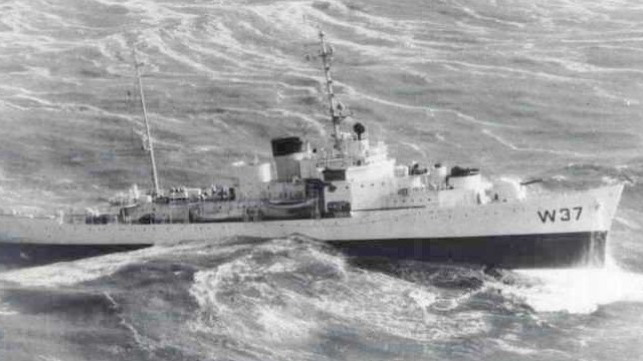Supreme Court Justice's Name Removed from Retired Coast Guard Cutter

The cutter USCGC Taney, the last surviving American warship that fought during the Pearl Harbor attack, will be known by her hull number only going forward. The cutter's namesake, Chief Justice Roger B. Taney (1777-1864), is remembered as the author of an infamous Supreme Court decision that briefly denied African-Americans access to any and all benefits of citizenship.
"In support of the local, national, and global call to remove symbols venerating oppression and racial injustice, Living Classrooms Foundation and Historic Ships in Baltimore have decided to remove the name of the former U.S. Coast Guard Cutter Taney," the ship's administrators wrote in a statement Wednesday. "Presently, the ship will be referred to by its hull identification, WHEC 37, which stands for High Endurance Cutter."
Living Classrooms has been the steward of the former USCGC Taney since 1994, and it runs educational programs on board. It recently raised $420,000 to dry dock the ship for repairs and preservation at the U.S. Coast Guard Yard in Curtis Bay, with work beginning in the fall of 2020.
USCGC Taney (hull WHEC-37) is a Secretary-class cutter, one of the Coast Guard's most celebrated and long-serving designs. She was commissioned in 1936 and served in World War II, the Korean War and Vietnam. Her time in the Coast Guard ended in 1986 after 50 years of service, and she was transferred to the City of Baltimore as a museum ship.
Like other vessels in the class, Taney was named after a former Treasury Secretary - in this case, Roger B. Taney, who served in the role for nine months in 1833-34. Taney was nominated as chief justice of the Supreme Court the following year, and his tenure on the court is the best-remembered portion of his career.
In 1857, Chief Justice Taney wrote the majority decision in the infamous case of Dred Scott v. Sandford. Scott, a former slave of African descent, sought damages against businessman John F.A. Sanford (the correct spelling) for alleged physical abuse. Taney ruled that Scott could not sue because he was not an American citizen, writing that individuals of his description "are not included, and were not intended to be included, under the word 'citizens' in the Constitution." He argued that lawmakers at the time of the drafting of the Constitution intended to create a "perpetual and impassable barrier . . . between the white race and the one which they had reduced to slavery, and governed as subjects with absolute and despotic power."
Further, Taney ruled that Scott was still a slave, despite having visited a federally-designated free territory - and that Congress did not have the power to designate slavery-free regions.
Historians believe that the backlash to this decision contributed to the rise of the anti-slavery Republican Party, the election of President Abraham Lincoln in 1860 and the subsequent war between the states. Dred Scott v Sandford was nullified by the 13th and 14th Amendments shortly after the war, though Taney did not live to see their passage.

that matters most
Get the latest maritime news delivered to your inbox daily.
Taney's ruling has been widely reviled ever since its publication - not only for its explicitly racist content, but for its reasoning and its impact on the long-term reputation of the Supreme Court. “It is the nation’s most infamous legal decision, the essence of bad law,” said Justice Elena Kagan (then dean of Harvard Law School) at a 2007 conference.
The service history of cutter WHEC-37 is not directly connected with Chief Justice Taney, who died seven decades before her keel was laid. “We are not erasing history,” said James Piper Bond, the president and CEO of Living Classrooms Foundation. “Nor is it our intention to minimize the service and sacrifice of the men and women who have served with honor aboard the U.S. Coast Guard Cutter Taney. Our intention is to learn from history and celebrate the legacy of the ship and those who served aboard.”
